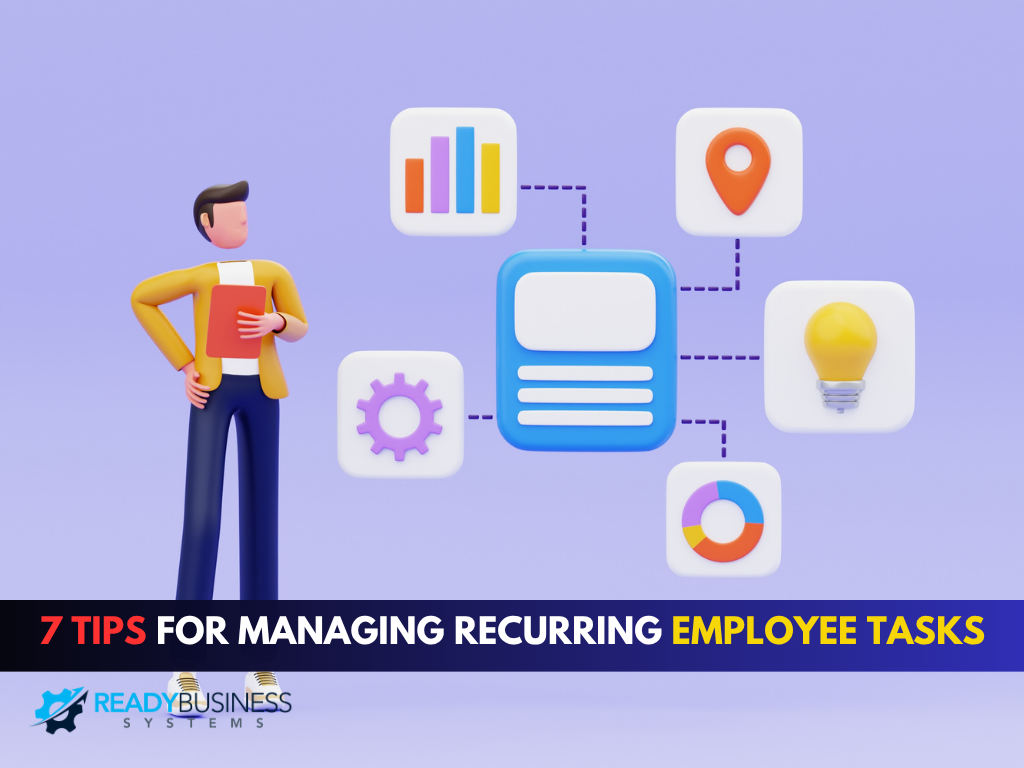Your employee tasks keep piling up. One week is for review reminders. Next, it’s chasing people for return dates or sending out event invites. It never ends. And when you miss one? Things start to fall apart fast.
That’s why employee task management matters. Recurring task systems help you stay on top of those repeat jobs that are easy to forget but important to keep things running smoothly. The good news? You don’t have to juggle them all on your own. In this blog, we’ll walk you through 7 simple tips to manage recurring employee tasks without dropping the ball.
Map Out Your Recurring Employee Tasks
Start by listing every task your employees do on a regular schedule. Things like weekly mowing, monthly equipment checks, or seasonal cleanups.
Then, set how often each task repeats weekly, bi-weekly, monthly, or seasonally. Keep everything on one shared system so no one is guessing what’s due.
Use a tool that allows you to schedule recurring jobs and associate them with specific crews. This avoids missed work, and you don’t have to remind anyone manually each week.

Build Smart Task Flows with Automation
Once you’ve listed your recurring tasks, link them to the steps that follow.
For example, after a task is scheduled, your system should send reminders to your crew. If the task isn’t marked complete by a specific time, the office should get notified. You can also send alerts about supplies or safety checks before a job.
Automation saves time by connecting each step. No manual follow-up. No chasing people down.
Use Upsell Triggers within Task Workflows
Set rules inside your system to follow up based on the type of work done.
For example, if a certain task is completed, your system can wait a few weeks and then offer a follow-up service. Or if a property meets specific criteria, it can trigger a custom message for a related service.
This helps you stay top-of-mind with clients and grow revenue without extra work.
Sync Employee Reviews with Their Recurring Tasks
Your task data can also make reviews easier.
If your system tracks which tasks get done on time, how often work is rescheduled, or how long crews take, you can use that in employee evaluations.
Instead of waiting until review day, set reminders to go out every quarter. This gives everyone a heads-up and helps them prepare.

Connect Tasks to Off-Season Staff Planning
Recurring employee task management should also cover hiring and off-season planning.
Each spring, send automatic emails asking who’s returning. Each fall, schedule reminders to let staff know when the season ends.
You can also schedule task-based reminders for tasks such as training, certifications, and equipment checks during the slow season. That way, your team stays ready even when jobs are fewer.
Tie Routes, Tasks, and Inventory Together
If your team is covering a lot of ground, task planning should also account for route distances and equipment needs.
Your system should flag long routes so your crew can prep ahead. It should also track which supplies will be needed for each type of task and place reorders early.
When tasks, routes, and supplies are connected, your team stays efficient and doesn’t run out of gear.
Real-Time Task Updates and Crew Checks
Make sure your crew can update task status from the field.
Let them mark jobs done, upload notes or photos, and flag issues like weather delays. This keeps your office in the loop and helps reschedule jobs fast if something changes.
Live updates mean no more guessing what’s done or who’s behind.
Audit and Improve Recurring Task Workflows
Every few months, take a look at your system.
Check how many tasks were missed. How many alerts were ignored? Which automated follow-ups were opened or not?

Use that info to adjust your system. Move reminders earlier. Add alerts when crews fall behind. Cut what isn’t helping.
It’s not a one-time setup. Small changes each season make a big difference.
Plug Into Expert Tools and Guides
Use software and guides built for landscape businesses.
Look for systems that let you tie together scheduling, crews, supplies, and reminders. And read their how-to guides so you’re getting the most out of each feature.
Don’t build everything from scratch. Use tools that already work.
Final Thoughts
Recurring employee tasks can pile up fast. But with the right setup, you can stay on top of schedules, crews, and seasonal work. Automation makes it easier to run your landscape business without missing a beat.
Need help setting it up? We build simple systems that do the work for you.
Visit Ready Business Systems to get started.



